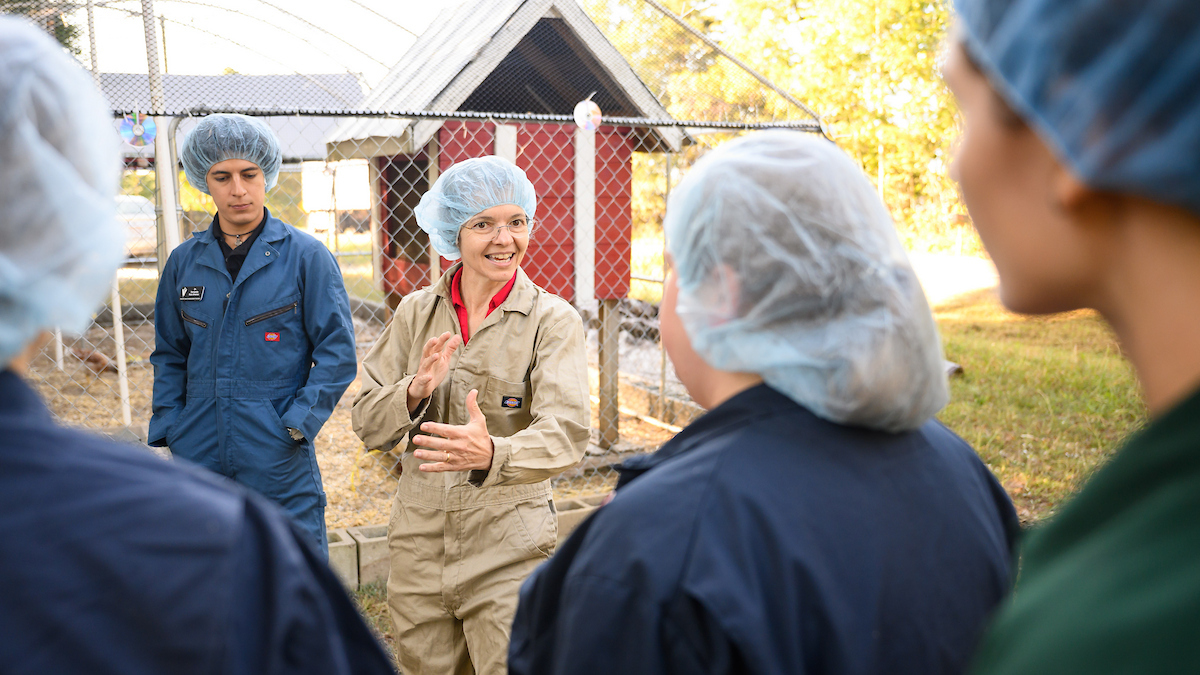A New Knee for Cyrano: NC State Osseointegrated Surgery Provides Total Knee Replacement for a Cat
A cancer survivor named Cyrano will receive an osseointegrated total knee replacement. The pioneering feline will receive his new knee on Jan. 26 at North Carolina State University’s College of Veterinary Medicine
Cyrano is a 10-year-old tabby cat who was treated for bone cancer last year and is now in total remission. However, the disease and treatment weakened the bone in his affected back leg and Cyrano’s knee deteriorated as a result. His owner, Sandy Lerner, felt that amputation would negatively affect the cat’s quality of life, and her search for other options brought them both to NC State and the team of orthopedic surgeon Dr. Denis Marcellin-Little and industrial and systems engineer Dr. Ola Harrysson.
The NC State team, in collaboration with veterinarians and engineers from around the U.S. and abroad, will provide Cyrano with the first ever custom-made, osseointegrated feline knee replacement. As in human knee replacements, Cyrano’s state-of-the-art knee will provide a full range of natural motion previously unavailable in feline knee surgeries.
“Although total knee replacements in dogs are increasingly common, a cat poses some additional challenges, particularly regarding the size of the implant,” Dr. Marcellin-Little says. “Additionally, Cyrano’s existing leg bones were weakened by the cancer, so we must take care to be sure that the implant does not place undue stress on the remaining bone.”
Dr. Marcellin-Little performed the world’s first osseointegrated implant surgery in 2005 on cat George Bailey, who was born without the lower half of his hind legs. Since then, Drs. Marcellin-Little and Harrysson have done several implant surgeries, improving and strengthening the design and streamlining the manufacturing process, but Cyrano’s case was different enough to warrant additional collaborations–both with veterinary surgeons familiar with knee replacements in dogs, and with implant engineers and manufacturers. The result is a truly one-of-a-kind collaboration aimed at bringing feline knee replacements into the mainstream.
Cyrano’s case is unique, but Dr. Marcellin-Little hopes that this surgery will pave the way toward making feline knee replacements more commonly available. “This collaboration between NC State’s College of Veterinary Medicine, College of Engineering, and outside implant designers and manufacturers allows us to design and make implants that we could only dream of, in the past. I am sure that this technology will help other patients with tumors, in the future.”
NC State College of Veterinary Medicine and College of Engineering: Pioneers in Osseointegration
Dr. Denis Marcellin-Little and Dr. Ola Harrysson are pioneers in osseointegration, a process that fuses a prosthetic limb with an animal’s (or human’s) bones. Osseointegration creates a strong, permanent bond between living bone and the titanium implant, which is anchored into the bone—similar to the way an artificial tooth is anchored into the jaw. The individually designed prosthesis is then attached to the tip of the implant.
The implant and prosthesis are designed and created using rapid prototyping technology that can create a perfectly replicated three-dimensional model of the animal’s limb. Surgeons then use the model to practice the procedure, making minute adjustments to ensure a perfect fit before the surgery. The actual implant and prosthesis are then created to match specifications.
NC State is the only university in the world with a college of engineering and college of veterinary medicine that can design, manufacture, and surgically implant custom prosthetics for veterinary patients.
For more information on the osseointegrated implant procedure:
- Zeus
- Orthopedic Surgery report on MSNBC
- CBS Early Show report on Cassidy
- Scientific American reporton Prosthetic Limb Procedure for Patient Cassidy
- Cassidy photo gallery
- WRAL reporton Pez, Unique VTH Case
Posted Jan. 23, 2012
- Categories:


